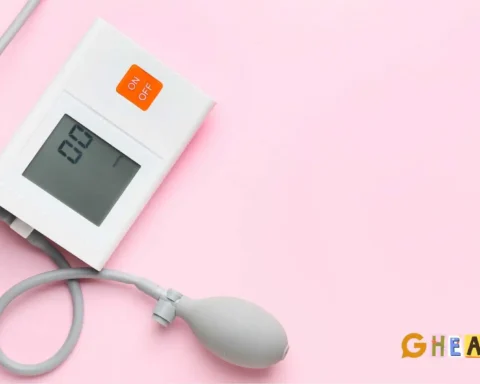Autism can present unique sensory challenges for individuals, manifesting in hypersensitivity, hypersensitivity or both, which can make even daily mundane activities seem overwhelming. In navigating these sensory challenges, engaging in sensory activities has been proven a powerful tool for autistic individuals to regulate their sensory processing. These activities are often simple and fun and can be tailored to specific individual sensory needs.
This blog explores the seven best sensory activities for autism, which can help autistic people regulate their sensory experience and improve their overall well-being.
Table of Contents
Sensory Overload in Autism
Sensory overload is a common challenge for individuals with autism, as they often experience heightened sensitivity to sights, sounds, smells, tastes, touch, and other sensory stimuli. This can lead to either hypersensitivity or hyposensitivity, where they may excessively avoid or seek out sensory input.
Hypersensitive individuals may find certain lights, sounds, textures, or tastes overwhelming, leading to behaviours like avoiding physical touch, covering ears in response to loud noises, or avoiding specific clothing. On the other hand, hyposensitive individuals may seek sensory stimulation through constant movement, loud noises, or touching objects.
Sensory overload occurs when the intensity of sensory input overwhelms an individual's ability to cope, resulting in anxiety and communication difficulties coupled with an intense need to escape the situation. This can manifest in increased movement, repetitive behaviours (known as stimming), covering ears or eyes, difficulty recognising internal sensations like hunger or pain, or refusal of certain foods or clothing items.
Sensory overload can lead to shutdowns, where the brain focuses solely on sensory processing at the expense of other functions. It can also lead to meltdowns characterised by overwhelming emotions and an insuppressible desire to escape the situation.
YOU MIGHT BE INTERESTED IN: From Segregation to Inclusion: Transforming Our Perception of Autism with Rahul Punj
What Are Sensory Activities?
Sensory activities are engaging experiences that involve stimulating the senses, including taste, touch, smell, hearing, and sight, as well as the vestibular and proprioception systems. They are designed to engage one or more of the senses to provide individuals, especially children, with opportunities to explore and interact with their surroundings in a hands-on manner.
Sensory activities for autism can play a vital role in supporting autistic individuals, offering calming or stimulating experiences based on individual needs and preferences. These activities range from simple tasks like listening to soothing music to more intricate setups like sensory circuits.
Sensory activities can be applied both at home and in educational settings like classrooms and therapeutic environments. Their significance holds especially true for children and teenagers diagnosed with autism spectrum disorder (ASD). They can be valuable learning tools that help stimulate various developmental aspects, including cognitive, emotional, physical, social and communication skills.
By providing appropriate sensory experiences, caregivers, educators, and therapists can help children with autism manage sensory challenges and enhance their overall well-being and engagement with their environment.
Importance of Sensory Activities
Autistic individuals often have sensory processing patterns that are more susceptible to feeling overwhelmed or needing extra sensory input compared to their neurotypical peers. This heightened sensitivity or need for sensory stimulation underscores the importance of integrating tailored sensory activities into their daily routines and environments.
- Improved Sensory Processing: Sensory activities assist the brain in retaining its responses to sensory stimuli and building better coping mechanisms when faced with different sounds, textures, lights, scents, and tastes. They facilitate better processing of sensory information by training the senses through stimulation and engaging the brain in sensory-rich experiences.
- Enhanced Social Skills: Sensory play activities can develop social skills like communication and cooperation by providing opportunities to interact with others fun and engagingly. These activities can also help individuals with autism develop empathy, share experiences, and build relationships with others.
- Boosted Coordination and Motor Skills: Motor activities can support the development of fine and gross motor skills, which are often delayed in individuals with autism. These activities can help autistic people develop hand-eye coordination, balance, and strength, which are essential for everyday activities like dressing, eating, and playing.
- Calming Effect: Sensory activities can soothe agitation or overwhelmed states caused by excessive sensory input. They can help individuals with autism regulate their emotions, manage and reduce anxiety levels, and produce relaxation.
- Emotional Regulation: Extending from the previous point, calm nerves promote relaxation and pleasure, which in turn helps individuals regulate their emotions. They also help develop self-awareness, self-regulation, and self-expression, promoting emotional well-being.
- Improved Cognitive Development: Sensory activities can stimulate the brain and promote cognitive skills by engaging the senses and encouraging exploration and interaction with the environment. This can help individuals with autism develop problem-solving skills, memory, and attention, which are crucial for academic and social success.
- Development of Language Skills: Sensory activities aid the natural development of language skills, especially in children with ASD, allowing them to learn through real-time experience. These activities can help pick up nonverbal signs and a sense of perspective, which is essential for communication and social interaction.
- Management of Sensory Input: Sensory activities can help better manage a variety of sensations in their environment, reducing anxiety and promoting positive engagement with the world around them. These activities can help develop sensory modulation, discrimination, and organisation, which are important for sensory integration and processing.
Types of Sensory Activities for Autism
There are a range of sensory activities that people with autism can engage in. These include deep pressure activities and tactile and visual stimulation methods tailored to their specific needs to provide a soothing experience and aid sensory integration.
Deep pressure activities entail applying gentle pressure to the body, which often induces a calming and grounding effect. Good examples would be
- Using weighted blankets or vests
- Compression clothing like shirts or pants
- Wrapping oneself in blankets
- Using tactile playing tools like kinetic sand, slime or playdough
Tactile experiences involve exploring different textures and sensations. This can be achieved through experiences such as
- Experimenting with water temperatures
- Creating patterns with wet brushes or sponges
- Feeling various fabrics like silk or faux fur
Visual stimulation activities rely on sight to promote relaxation. These activities may include
- Watching tranquil videos or nature scenes
- Employing visual sensory toys like lava lamps
- Lightboxes or projectors to display soothing images or patterns
Auditory activities involve engaging the sense of hearing to promote relaxation and sensory integration through auditory stimulation. Some notable examples include:
- Listening to calming music or nature sounds
- Playing musical instruments such as drums, chimes, or xylophones
- Exploring different auditory textures through sound-making toys or instruments
- Engaging in guided auditory relaxation exercises or meditation sessions
DIY Sensory Activities for Autism
Besides pre-made sensory toys, many DIY sensory activities can be cost-effective and customised to meet the specific needs of adults and children with autism. Engaging oneself in the creation process can also be enjoyable and empowering for individuals with autism, fostering a sense of agency and ownership over the creative act.
- Sensory bottles are also a cost-effective and creative way to effect visual and tactile stimulation. Fill a plastic bottle with water, glitter, beads, or sequins, then seal tightly. Shake the bottle for a calming visual experience.
- Sensory bins can be crafted at home by filling a plastic container with sensory materials like rice, beans, or sand. Small, malleable toys or objects such as plastic animals, scoops, and funnels may also be included.
- Fidget toys like sensory bags and stress balls are also excellent DIY options for sensory stimulation. Sensory bags can be filled with various textures, and stress balls may made from balloons filled with rice or flour.
- Finger and footprint painting provides a creative outlet for individuals to express themselves through art while engaging in tactile and visual experiences. Using hands and feet to paint on paper can create an immersive experience for children and adults alike.
- Scented slime or playdough is another method of engaging tactile senses that can lead to a sense of calm. It can be made at home simply by combining cornflour and water. Add in food colouring and glitter to engage the sense of smell as well. Playdough comes in various scents like lemon juice, vanilla extract, cinnamon, or peppermint flavouring and can serve as a creative and engaging multi-sensory activity.
- Instrument play offers a multi-sensory experience through auditory stimulation. Exploring different pitches and volumes through instruments like drums and shakers enhances motor skills like hand-eye coordination and rhythm awareness. Crafting homemade instruments from household items also fosters sensory integration skills through creativity and problem-solving.
- Bubble Wrap Popping is a fun activity for children and adults, offering tactile and auditory feedback to manage stress and anxiety effectively.
Sensory Activities for Adults
While the methods discussed so far can cater to autistic children and adults alike, some specific activities are tailored to the adult experience. Here are seven examples tailored for adults with autism:
- Yoga enhances body awareness and relaxation, offering a structured and predictable environment for improved control and balance of the mind and body.
- Massage Therapy provides deep pressure input to reduce anxiety and promote calmness and body awareness.
- Aromatherapy uses calming scents like lavender to reduce anxiety and improve sleep.
- Dance Parties can engage in rhythmic movement, improving coordination and listening skills and providing a positive outlet for stress.
- Pottery can be a therapeutic tactile activity that promotes relaxation, control, and a sense of satisfaction and accomplishment.
- Autism-friendly Beanbag Chairs provide a secure and snug spot for relaxation and engagement in various activities.
Outreach teams may also provide personalised support and resources to individuals with autism, their families, and caregivers. For example, Autism Speaks has an Autism Response Team (ART) specially trained to connect people with autism, their families, and caregivers to information, tools, and resources.
ALSO READ: 5 Remarkable Autism Benefits and Support Strategies
Conclusion
Sensory activities for autism are effective tools for supporting autistic individuals and aiding in enhancing sensory processing, emotional regulation skills and overall development. Tailored to individual needs, these activities, be they tactile, visual, or auditory experiences, can foster relaxation and comfort for individuals with autism, providing opportunities for them to engage with their environment in a calming and enjoyable manner. With the proper support and tools at hand, children and adults with autism can develop all the essential skills to engage with their environment and navigate the world with confidence and ease.
FAQs
What are daily activities for autism?
Daily activities require structured routines catering to an individual's unique needs, preferences, and abilities, which can help predictability and reduce anxiety around daily life events. Activities can range from sensory play, calming activities, and daily living skills such as meal times, self-care, medication, therapy and sleeping. Identifying important tasks, incorporating necessary tasks with fun activities, and maintaining consistency and practice to get used to the schedule are essential.
What is sensory play for autism?
Sensory play for autism involves stimulating the senses, such as touch, smell, taste, sight, and hearing. They include calming and fun activities that can help ameliorate hypersensitivity and hypersensitivity in autistic people, who are prone to sensory overload. They can help children with autism develop language skills, improve social and motor skills, and help them self-regulate.
What are sensory food activities for autism?
Sensory food activities for autism involve activities that engage the senses through food exploration. These activities can include experiences like cooking, baking, tasting different textures and flavours, and engaging in food-related sensory play to help people with autism develop their sensory processing skills and expand their food preferences.











[…] a significant day to honour and recognize the unique experiences and contributions of people with autism. This day aims to foster acceptance, understanding, and appreciation for the autism community. This […]